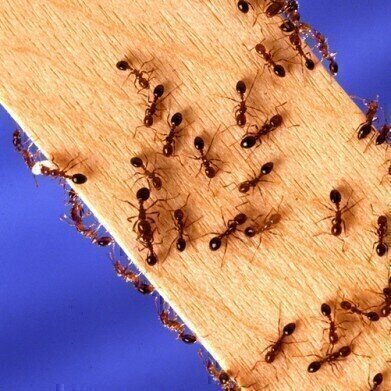Bioanalytical
How Do Ants Protect Themselves? — Chromatography Explores
May 02 2017
Ants are like any animal which lives in groups close together. They are susceptible to epidemics — outbreaks of disease that can rapidly spread throughout the group. Humans have developed several defence mechanisms to the threat of an epidemic breaking out.
We use vaccination to control some infectious diseases — with childhood vaccination programmes used to stop measles and other infectious diseases. If a highly infectious disease is detected in a person then usually the person is isolated from the rest of the population to make sure that it doesn’t spread. So how do ants stop diseases and protect themselves?
Tree resin keeps the bugs down
With colonies numbering hundreds of thousands, and their nests being warm and humid, ants should be ideal candidates for epidemics that devastate their nests. But ants are clean. They groom each other to keep themselves clean and they make sure that their nests are kept clean and tidy.
It is also known that ants — like some other insects such as honeybees — bring tree resin into the nest to help to protect the nest from infection. Wood ants collect resin from coniferous trees which they bring back to the nest and keep near their young. Analysis has shown that the resin is rich in secondary metabolites that have antimicrobial properties to protect the ants against bacterial and fungicidal pathogens. But could the ants be using more protection?
Formic acid and resin
An evolutionary biologist from the University of Lausanne certainly thinks so. In a paper in Ecology and Evolution, Michel Chapuisat and colleagues investigated if the ants are using the tree resin to produce an even better protection for the ants and their nest. Many people know that ants produce and use formic acid — and after all, formic acid also has antimicrobial properties and is known to be effective against Metarhizium a fungal pathogen of ants. Could the ants use both to protect themselves?
Miniature chemical factories
The team first investigated how well resin that had been in contact with wood ants inhibited a fungus compared to resin on its own. The team found that in the fungus covered petri dishes, the resin stored with ants gave a larger fungus-free area compared to the dishes containing ant-free resin. This suggested that the ants had modified the resin in some way.
Using liquid chromatography, the researchers could identify formic acid in the resin samples that the ants had contact with. This suggests that the ants are mixing the found resin with the produced formic acid to produce an even better method of protecting their nests and themselves.
Liquid chromatography is a common method for the analysis of biomolecules as discussed in the article, Faster Analysis of Monoclonal Antibodies Using Silica Monoliths Designed for Bioanalysis. But of course, the ants don’t need to know that — once again nature is showing humans the way forward in antibacterial protection.
Digital Edition
Chromatography Today - Buyers' Guide 2022
October 2023
In This Edition Modern & Practical Applications - Accelerating ADC Development with Mass Spectrometry - Implementing High-Resolution Ion Mobility into Peptide Mapping Workflows Chromatogr...
View all digital editions
Events
Apr 23 2024 Kintex, South Korea
Apr 23 2024 Seoul, South Korea
Apr 28 2024 Montreal, Quebec, Canada
May 05 2024 Seville, Spain
May 15 2024 Birmingham, UK














